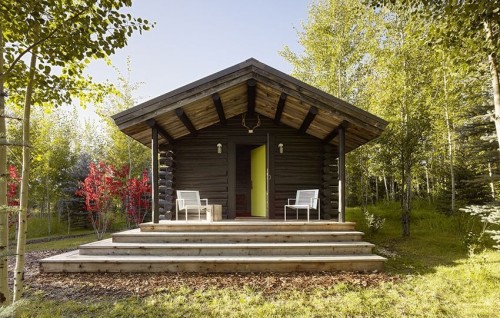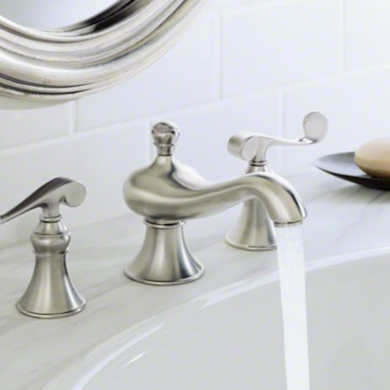As another summer slips away, the days seem to straddle the seasons, alternating between warm breezes and brisk winds. So, too, do home improvement tasks. This month, the focus is primarily on the peripheries — clearing clutter in the garage, brightening a lackluster entry, gathering valuable seeds from the garden, replacing tired bathroom fixtures and closing up that vacation home.
Source: Carney Logan Burke Architects
No. 1: Close up the vacation house
For homeowners fortunate enough to have a vacation retreat, Labor Day weekend signals the start of the annual ritual of closing up the seasonal getaway. Although best practices vary by region, if you have an unwinterized rural cottage, beach retreat or mountain cabin, there are a few basic things you can do to help safeguard your house through the cold months ahead:
- A few weeks before you leave, begin evaluating the condition of your home top to bottom, inside and out. Find out what broke over the summer (or what’s about to) and arrange to have repairs made. Tradesmen in towns with seasonal occupants are usually inclined to negotiate when the population ebbs.
- On the exterior, check the foundation, siding and trim for cracks and crevices that could let in moisture or provide an entry point for unwelcome creatures. Closely examine where the roof overhang meets the house. Pests as teeny as wasps and as large as squirrels often seek to nest in the solar-warmed space of house attics.
- Clear the gutters so that rain and snowmelt run freely away from the base of the house and, using a ladder or binoculars, inspect the roof for raised shingles, making repairs if necessary. Another prudent defense is to trim back any tree branches near the house that could cause damage in a strong storm.
- Electricity should be shut off at the main, but leave on circuits that control such essentials as the alarm system. Also be sure to unplug appliances, especially the large and expensive ones, just in case lightning strikes. Gas can be turned off at the main, but for many homeowners, it’s probably safer and easier to call the utility and temporarily suspend service.
- All water pipes should be drained. Accomplish this by turning off the main water supply, opening all faucets and leaving them open. Remember also to drain the supply hoses into indoor outlets like the dishwasher and outdoor outlets like the sprinkler system. If winter conditions are brutal in your area, take the precaution of hiring a professional plumber to do the work.
- Inside, clean out closets and cabinets, leaving them open to ventilate. Remove and store all bedding in plastic (throw in moth balls if you have them) and, for protection against burrowing mice, cover all mattresses.
- The kitchen deserves time and attention because food can attract animals and canned goods can explode if they freeze. Store nonperishable food in metal containers and relocate cans to the basement if possible, or take them back to your primary residence.
Go easy on yourself and get started with the close-down process sooner rather than later. Shutting the house properly in the fall helps ensure that your summer abode is healthy and sound upon your return in the spring.
Source: kohler.com
No. 2: Update the bath
If you have a dated bath in need of new fixtures, you’ll have no trouble finding attractive replacements that suit both your taste and budget. But if you’re planning to replace the faucet yourself, be sure to take into consideration the configuration of your sink or vanity. Single-hole sinks fit either single-handled or smaller two-handled faucets. Center-set sinks feature three holes drilled within 4 inches and accommodate single-handled designs or two-handled faucets mounted on a plate or escutcheon. Widespread sinks, which have three separate holes at least 8 inches apart, accept larger two-handled designs. Knowing which configuration you have will make the replacement an easy DIY endeavor.
No. 3: Take advantage of the garden
Many veteran gardeners save seeds almost compulsively. Why? Because if you harvest the seeds from your own garden, you not only save money but also ensure that you have the varieties you love. And, saving seeds is simple enough for even novice gardeners. For flowers, cut heads once their seed pods have dried (or shortly before), then hang them upside down in a paper bag to dry. After allowing enough time for drying, remove the seeds, separating them as much as possible from the chaff and other plant material. For fruits and vegetables, harvest fruit seeds once the fruit has become fully ripe or overripe. Before setting the seeds out to dry, give them a thorough wash. Adjust your approach with podded vegetables like beans and peas. Let these seeds dry in their pods on the plants before you gather them. With a little time and preparation, you will have the makings for a successful planting season come spring.
http://www.zillowblog.com/2013-09-09


